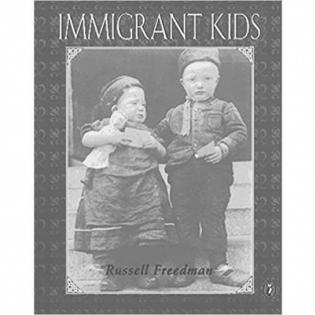Immigrant Kids Literature Guide
What would it be like to be an immigrant child at the turn of the 20th century? Filled with stunning photographs, this book views history through the eyes of young people. From school to work to play, the experience of immigrant families comes to life. More than just a history lesson, this book will inspire discussions about current events that can open a child’s eyes to some of the needs of immigrants and refugees. Youth will grow in compassion for others, including people who may seem very different from themselves.
Before Reading:
Ask: Have you ever done something really difficult to help yourself or others? What did you do? Why would someone help another person if it was hard work? Talk about the meaning of sacrifice.
Show: Show a picture of the Statue of Liberty. Explain that this was the first sight that many immigrants saw in America when they took a boat from across the ocean, and it is a symbol that represents the United States and freedom. Ask, “What do you think of or feel when you see the Statue of Liberty?”
Connect: We are going to read a story about immigrant children who left their homes in other countries to come to America long ago. We will see that these children may seem different, but they have many things in common with you.
During Reading:
Ask: What is your daily schedule like? How is your daily schedule like and different from that of an immigrant child in the early 20th century?
Show: Look at one picture carefully and point out the things you can relate to in it. What is the same and what is different for you? Some examples include playing, eating at the dinner table, doing homework, and riding bicycles.
Connect: According to the book, what are some reasons people immigrated to America? Some of these reasons still exist today. People leave their home countries because of war, poverty, and fear of persecution. What do you think can be done to address these issues?
After Reading:
Ask: Have you ever seen someone get teased or treated unfairly because they were different in some way? In what ways did immigrants experience prejudice? How might an immigrant child’s life be better today than it was 100 years ago? How might it be harder?
Show: Look up on the Internet current issues about immigration today. Talk about the stories you find. What laws protect immigrants’ rights?
Connect: Are you very different from the immigrant kids in this book? Regardless of the years that separate you, you share many things: you spend time with friends, go to school, and have fun. Why should we help today’s immigrants adjust to their new life and find friends? How can you be a leader?
Activities:
- Choose a picture from the book to focus on. Write a description, narrative, or poem that brings the picture to life.
- Consider the many ways people contribute to their community through the values and practices of their family and culture. Explore Learning to Give’s Cultural Competence Facilitator’s Guide for more ways to learn about the cultures in your community.
- Interview others (parents, caregivers, neighbors, teachers) about their heritage, especially with regard to immigration. Questions to consider include the following: Where did your ancestors come from? Why and when did they come to this country? How does knowing your heritage affect you? Is family history important to you? Discuss the interview: How did it feel to hear the stories of other people? Did you understand that person better after the interview?
- Look at a virtual tour of a Lower East Side Tenement apartment building in New York City. Look up the Tenement Museum.Use this website to better understand the lives of people in the late 19th century and early 20th century. Take the tour and reflect on the lives of immigrants as they tried to be independent in a new country.
- Create or sing/read a folk song or poem that reflects the culture of your family. Discuss how songs and stories might help immigrants keep their culture and feel part of the culture of their new home.
